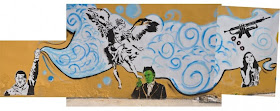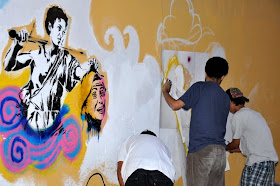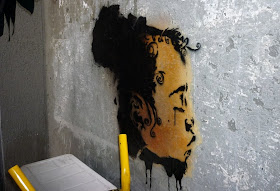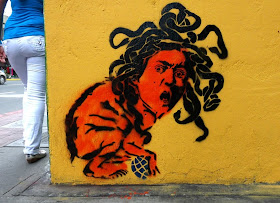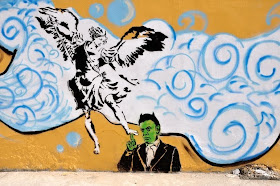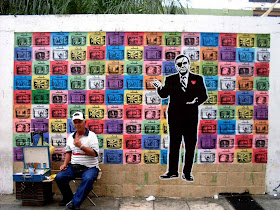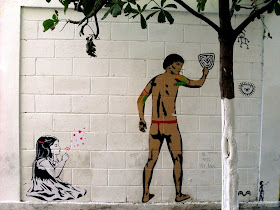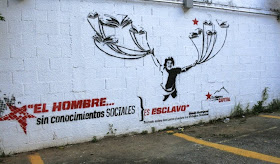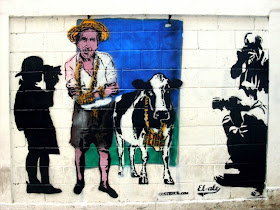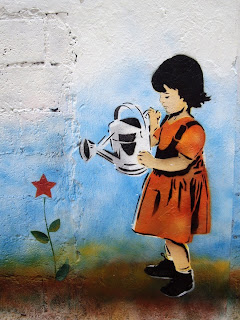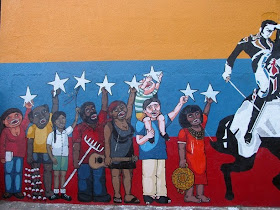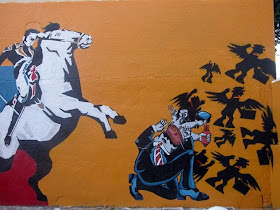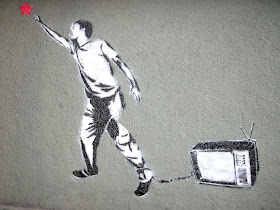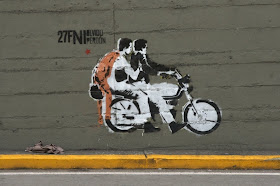This means that as well as searching for the distant Stone Age origins of our symbolic capacity in tools, fire, language, etc, we also need to explore how that capacity itself evolved over subsequent millennia to help give us art, institutions and religion.
There is no consensus among scientists about when language and the use of symbols arose, how far it represents a genetic development and how this ties in with cultural evolution. The likelihood seems to be that the capacity for using symbols developed in pre-sapiens humans, and that the process was accelerated by cultural transmission. We did not go from a bit of engraved ochre to the Turner Prize overnight, it was part of a process — which is still underway — of the ratchet effect of cumulative cultural learning. Although Darwinian evolution continues, the dominant mechanism of change in human beings and their societies has become culture: a hugely faster process.
Cognitive archaeology
One of the most useful fields of research here is the relatively young science of cognitive archaeology, a branch of archaeology which seeks to understand where human minds come from: how consciousness evolved and how people thought in the past. We have already made reference on this blog to the work of such figures as Merlin Donald and Michael Tomasello.
Cognitive archaeologists have proposed that the changes were brought about by cultural transmission, defined by Michael Tomasello as a process “that enables individual organisms to save much time and effort, not to mention risk, by exploiting the already existing knowledge and skills of conspecifics.”[1] Uniquely, humans evolved a form of social cognition that made them capable of cultural evolution, i.e. to accumulate modifications over time in a way other animal species cannot. Each of us enters the world as a sentient animal very similar to our ancestors of 150,000 years ago. To take the example of language: our genome gives us an inherited capacity for language, but we will not be able to speak one unless it is taught to us by culture.[2]
Humans’ faculty for cultural learning depends, in Tomasello’s view, upon our ability to recognise our fellow humans as conscious beings with intentions and mental lives like our own, an ability which develops in infants from around 9–12 months old.
This understanding of others as intentional beings like the self is crucial... because cultural artifacts and social practices — exemplified prototypically by the use of tools and linguistic symbols — invariably point beyond themselves to other outside entities: tools point to the problems they are designed to solve and linguistic symbols point to the communicative situations they are designed to represent. Therefore, to socially learn the conventional use of a tool or symbol, children must come to understand why, toward what outside end, the other person is using the tool or symbol; that is to say, they must understand the intentional significance of the tool use or symbolic practice.[3]
Without symbols, we could not represent the experiences of others, itself demanding that we are aware of the minds of others. This gives humans “the ability to share a virtual common mind” (Deacon). The ways in which we may use symbolic communication to represent our own states of mind, but also other people’s states of mind, are infinite, but when we use symbols, we do not conjure up our own unique language — we borrow the conventions from our social context.
The use of symbolic representation is thus a social, collective activity and sociogenetic in nature. We are born into a world of culture and learn about the relationships and conventions within it. Symbols show us how previous generations have tried to categorise, reimagine and understand the world, and communicate it to others. They also introduce us to a multiplicity of perspectives. Tomasello comments on how a dog might be portrayed as an animal, a pet, or a pest, depending upon what the person wished to communicate about it. Symbols are not a direct sensory record but an interpretation, one way amongst many others in which someone has tried to place a meaning on something. Over a long period of historical time, symbols accumulate a legacy of meaning within a society. Thus symbols “free human cognition from the immediate perceptual situation... by enabling multiple simultaneous representations of each and every, indeed all possible, perceptual situations” (Tomasello).
Institutional facts
One of the consequences of symbolic behaviour centres upon ‘institutional facts’. It is worth turning here to Colin Renfrew’s discussion of symbols in Prehistory:
Human culture is based upon the use of symbols, in words and in material form. Initially they were used for things that were evidently there in nature — like birds or the sun — things that the philosopher John Searle would call ‘brute facts’. But they can also be used to indicate realities that are not, in quite this way, facts of nature but rather what can be termed social facts. For instance this hat can be my hat, and that hat is your hat. Those attributions of ownership are what Searle would term ‘institutional facts’, which are of a very different kind.
This simple and perhaps seemingly trivial distinction turns out to be a very important one when we come to understand how human culture is constructed...
It is no exaggeration to say that society is organised by means of symbolic categories — and it is important also to note that different societies organise themselves by means of different symbolic categories. Symbols are used, for instance, for measuring the world and for planning. They are dependent upon the formations of new forms of social relations, which themselves rely upon the use of symbols to structure and to regulate inter-personal behaviour. Symbols of authority are needed in any society of a sufficient size so that we know who everyone is personally — we need to recognise the policeman or the ticket inspector or the bank clerk for the role they play. At the superficial level we recognise the policeman by his helmet, or the ticket inspector by his or her uniform or badge, and bank clerks by their mode of dress and the place in which they sit: these are the symbolic indicators. But, at a more basic level, these social roles are dependent upon institutional developments: the formation of a police force, or the development of a transport system, or the institution of banking.[4]
Symbols are not only what we speak with and what we daub on cave walls — they are what we think with too. It is wrong to conceive of symbols dualistically as mental counterparts to a physical ‘reality’. The police officer’s uniform does not only symbolise a special kind of individual but introduces a new concept, or a new relationship: that society has created a body of men and women who by social agreement are granted power to restrain the actions of others. This in turn is predicated upon the institution of private property, the protection of which makes up 90% of the modern police officer’s work.
A symbol does not merely recreate material reality in an alternative form. It represents the creation or discovery of a new kind of reality. Let us take the example of gold. Today it is taken for granted that gold is a highly valuable metal, but its earliest known use as such dates back only as far as about 4500 BCE at the Varna necropolis in Bulgaria.
 Gold items from the Varna necropolis. Photo: Yelkrokoyade.
Gold items from the Varna necropolis. Photo: Yelkrokoyade.Gold has relatively little use value, being too soft to be used in most practical applications; its value in human societies had its origins in various things which we needn’t discuss here. But as Renfrew points out:
the value assigned to a piece of gold, while in one sense arbitrary, is, for those who accept it, a reality. It... may be termed an institutional fact. For the societies that accept it, the value of gold is indeed a reality, and a reality by which one can live and govern the practice of one’s life.
Whereas for Paleolithic humanity, gold was at best a fascinatingly shimmery material, for some early civilisations it had become, at worst, a good reason to kill people. In other societies, the principal material of value was feathers, or precious stones. There is no literal physical reality in which gold or any other material is a valuable commodity. “Without ceasing to be a part of material reality,” wrote Voloshinov, “such an object, reflects and refracts another reality.”
A £10 note is not literally worth £10, because its cost of production is just a few pence. Once accepted as a symbol of value, however, people can use it to purchase £10’s worth of goods. The note, and the goods we purchase, appear to us to be actually worth £10. Because the money can claim £10’s worth of goods, and the goods can be exchanged for £10, it seems to the person that the value of £10 is inherent in the money and goods themselves. In fact it is a social reality, part of what Marx would have termed ‘social relations’. This brings us to what Marx termed commodity fetishism, a phenomenon where people mistake social relationships for relationships between things.[5] In the same way that some tribal cultures attribute particular objects with a mysterious power inherent in the object itself — the fetish — so people invest objects with inherent values or powers that they do not in fact possess. A £10 note is really a symbol made of paper and ink.
The establishment of gold as a valuable commodity then made it possible for gold to emerge in some societies as a ‘universal equivalent’ — a commodity used to measure the value of all other commodities — and thus to allow the creation of money, itself a symbol of the value created by a quantity of socially necessary labour time. Thus we see how new concepts emerge out of other, existing concepts.
It would be a mistake to think that such processes are purely mental constructs. They also depend upon humans’ material engagement with the world — in the case of gold, their discovery of gold, their exploration of its properties, their invention of mining techniques, and so on. Likewise, class society grew out of the creation of a social surplus via the agricultural revolution, and a layer of people who won control over that surplus. (We have already commented on the way in which symbols and art can be recruited to reinforce a particular class structure, for example in conspicuous displays of wealth and power.) Through their own actions, humans create or discover social relationships, ideas, values and, by doing so, expand their own cognitive and intellectual capacities. Marx recognised this long ago:
Labour is, in the first place, a process in which both man and Nature participate, and in which man of his own accord starts, regulates, and controls the material re-actions between himself and Nature. He opposes himself to Nature as one of her own forces, setting in motion arms and legs, head and hands, the natural forces of his body, in order to appropriate Nature’s productions in a form adapted to his own wants. By thus acting on the external world and changing it, he at the same time changes his own nature.[6]
To a Marxist, it is immediately apparent that the concept of institutional facts, indeed symbolism by its very nature, is inseparable from ideology.
Of course, quite what the people of past cultures meant by their symbols is sometimes very difficult for us to decipher. For example, images that seem to resemble vulvae are very common in Paleolithic parietal art.
 Paleolithic engraved symbol resembling a vulva. Photo: Calame.
Paleolithic engraved symbol resembling a vulva. Photo: Calame.Archaeologists can offer all sorts of theories for why artists carved such images onto rock surfaces, relating to the obvious themes of sexuality, fertility, rebirth and so on. We can put forward educated hypotheses based upon the referent, the wider archaeological context, and analogous practices in other cultures. But what these images actually meant to their Stone Age creators is impossible to know for sure.
In our article on ideology, we commented: “Society provides art with its raw material, with its range of possibilities. But art is not dictated to by economic conditions. If it was, it could in our society only reflect capitalist ideology. In fact, because it has strong relations with many different strands of the superstructure — such as philosophy, religion and psychology, not to mention the artist’s own idiosyncratic experience — and because many of these strands will be in contradiction, art is able to assert a degree of independence.” This holds true for symbols in general, because the relationship of a symbol to its referent is arbitrary. Terrence Deacon commented:
Because symbolic representation maintains reference irrespective of indexical attachment to any particular experiences, when an idea or a narrative of someone’s experience is reconstructed by another, it can be regrounded, so to speak, by interpreting it in terms of the iconic and indexical representations that constitute the listener’s memory. Symbolic reference is interpreter-dependent, because each interpreter independently supplies the nonsymbolic ground for it.[7]
Each person can bring their own individual meaning to a symbol or work of art. Hence the importance of cultural conventions in providing powerful, widespread and enduring accounts of how symbols should be understood. With Paleolithic art, it is precisely these conventions that have been lost.
Conclusion
Humans broadly share their cognitive powers with other primates, with an important exception — an adaptation enabling us to recognise the intentionality and consciousness of others. This adaptation enabled a unique process of cultural evolution, through which we interact with the world through the mediation of symbolic and cultural artifacts. These artifacts embody the perspectives of the people who created them and bequeath the knowledge and ideology of past generations to the present, helping to form an accumulation of culturally transmitted experience.
Long continuity in cultural practice then led to shared ideas, concepts and conventions, which in turn conditioned the cultural trajectories of different social groups (the Egyptians as compared to the Mesopotamians, and so on). The shared conventions became institutional facts governing how members of the group inter-related, and related with other groups, and how people related and engaged with the physical world.
[1] Michael Tomasello, The Cultural Origins of Human Cognition (1999).
[2] One area of great interest to cognitive archaeologists is the means by which individuals store cultural information using the memory, and the later impact of external storage in the form of writing systems.
[3] Tomasello, op. cit.
[4] Renfrew, Prehistory: The Making of the Human Mind (2007).
[5] The appearance of commodities makes it possible to turn art itself into a commodity, which we will study another time.
[6] Karl Marx, ‘The Labour-Process And The Process Of Producing Surplus-Value’ from Capital, vol. 1 (1867).
[7] Terrence Deacon, The Symbolic Species: The Co-evolution of Language and the Brain (1997).













